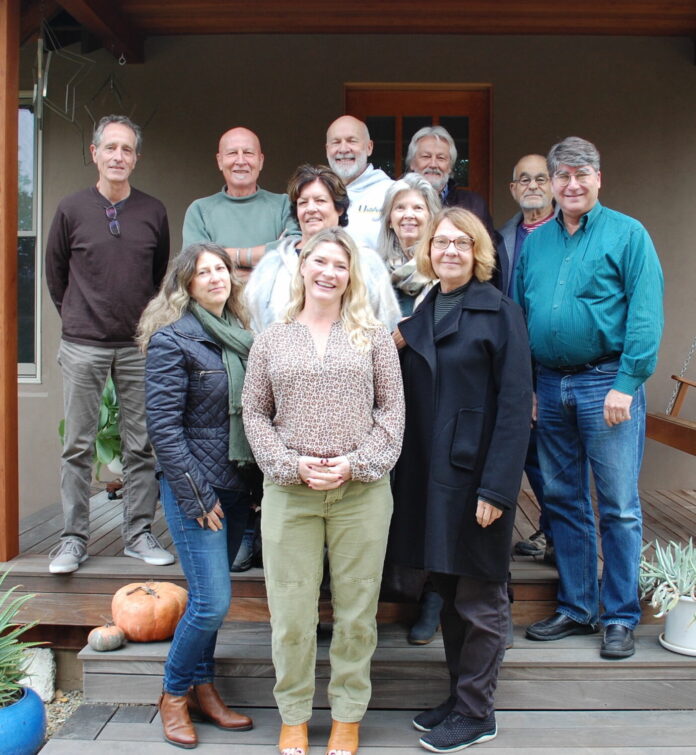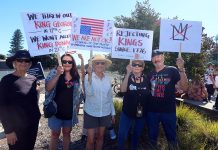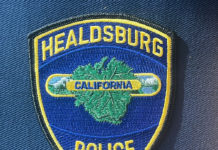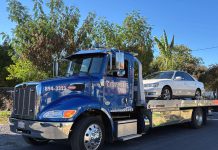
Healdsburg 2040 has accomplished a lot since its inception in 2018.
The citizen-run group has put climate change on the table for city discussions, organized a public forum on Zoom for city council candidates and has participated in creative leadership teams for arts and culture and parks master planning. Now the group’s sights are set on addressing climate change, drought resiliency and connectivity in the new year.
It also wants to encourage the city to have a long-term plan and to strengthen arts and culture in Healdsburg.
Healdsburg 2040 was formed in 2018 after the American Institute of Architects (AIA) and the Sustainable Design Assessment Team (SDAT) visited Healdsburg to help with the Healdsburg 2040 report, which would later be integrated into the city’s 2020-25 strategic plan.
Since then, Healdsburg 2040’s four work groups — arts and culture, housing, Master Plan/General Plan, and parks and connectivity — have been busy trying to advance the AIA recommendations of the SDAT report.
Healdsburg 2040 developed its own strategic plan based on the SDAT and submitted it to the Healdsburg City Council. It also invited participation in focus groups and came together for over 100 meetings.
They also put climate change on the table, which had not been in the SDAT report; built support for the community pavilion/event center at the Cerri Building; initiated and built support for the parklets and open streets program; participated in the Napa Sonoma Accessory Dwelling Unit Forum; conducted two surveys about slow streets and submitted them to the city; and participated in the Creative Leadership Team (Arts & Culture Master Plan), the Parks Design Team (Park Master Planning, River Access, & Connectivity) and the new city’s Road Safety Plan.
As 2022 approaches, the group is looking towards its new goals: addressing climate change and drought resilience in Healdsburg, reduce emissions, address affordable housing, improve connectivity and improve arts and culture throughout the city.
While some of these goals may not be entirely new to the group, they are goals with a renewed interest.
Climate change and dealing with drought
“When we looked at the SDAT report, climate change was not mentioned one single time, so that is why one of our priorities next year will be climate change. We need that long-term strategic plan. We need to make sure the city will follow up with that and we need an engagement with the community because otherwise we’ll never get to a cohesive goal,” said Healdsburg 2040 member Walter Niederberger.
Healdsburg 2040 member Tim Unger said the goal would be for every decision that the city makes to be vetted on whether it impacts climate change. For instance, when putting together an agenda report for a city council meeting, staff can include how an item relates to climate change and if it has any environmental impacts.
Niederberger added that the climate change goals for the city could be measurable. “It’s not like something you achieve in one year, it’s long-term,” he said.
They’d also want to look into water scarcity and find solutions for working with the city and residents to help with water resources.
“If we did a surge-based approach, (water) payments would be determined by use,” Unger mused. “The viewpoint is that this (water) is the big gorilla in the room. It touches everything and every aspect of our life. With Lake Mendocino on the verge of going dry … that’s our primary source of potable water. The plans that the city has put into place are short term rather than long term in nature.”
He said the prospect of having a purple pipe program that brings recycled water to the city for parks and school maintenance is a good idea to help manage the city’s water needs.
“If Healdsburg could effectively use recycled water to take care of the schools and the parks and some businesses in town then that would add substantially to our potable water budget because potable water would therefore not be used for irrigation,” Unger said.
He said with regional housing needs assessment (RHNA) housing requirements and the Mill District and Enzo Senior Living coming online soon, having a viable water resource plan in place to accommodate more water users is essential.
Emissions
“One major thing is if you look at emissions more than 60% is caused by car travel and as you know we have an immense (amount) of commuters out into the city each day. If you want to reduce emissions then that (getting commuters off the road) must be priority number one,” Niederberger said.
To do this, they’d like to see people on bikes more, and make the city more bike and pedestrian friendly.
“We hope to make it safer, especially for cyclists,” Niederberger said. Getting more people off the road means more public transportation and the goal of having more people live and work in Healdsburg, which brings up the need for affordable housing.
Affordable housing
“There’s been a lot of progress,” said Healdsburg 2040 member Deborah Kravitz, discussing affordable housing. “The SDAT report back in 2018 identified some parcels that until now had not really been acted on, like 155 Dry Creek, and the city seems to finally be working on getting that developed for affordable housing. We’re very excited to see that initial progress. Looking to the future, I think one of the main ways we can make progress on affordable housing is through the housing element update process. We’re encouraged that the city has decided to create a community advisory committee to assist the city in updating the housing element.”
State law requires that the Housing Element of the General Plan be updated every eight years. A comprehensive revision of the General Plan Housing Element was adopted by the council on Nov. 17, 2014 and certified by the state on Jan. 8, 2015.
In addition to the Housing Element Report, state law also requires the city to submit an annual progress report (APR) on the progress toward implementation of the Housing Element to the Governor’s Office of Planning and Research and the California Department of Housing and Community Development. The APR mainly focuses on the city’s progress in meeting the city’s share of regional housing needs (RHNA) as set forth in the city’s adopted Housing Element.
Kravitz said working with the city on the housing element update will be one of the group’s main focal points in the new year.
Unger said another aspect they’ve been trying to get the city to pursue is economic diversity, which he said “ties hand and glove” with affordable housing.
“Without better paying jobs it is going to be more challenging for people to afford affordable housing,” Unger said.
Connectivity
Bringing the community together by providing safer and more options for pedestrians and cyclists to travel around town is also a major goal for Healdsburg 2040.
“In the SDAT report, it made a number of recommendations for improving bicycle and pedestrian infrastructure as well as public transportation and pointed out that this kind of infrastructure has multiple benefits, environmental, safety, health, quality of life, equity and community building,” said Healdsburg 2040 member Brian Geagan. “More space for humans means more opportunity for human connection and a more cohesive community.”
One of the things the group has been talking about is Healdsburg’s open streets program and the hope to continue that program and expand it,” he said. The program includes the parklet program and the Plaza Street closure program.
Geagan said 2040’s long-term vision is for a truly open pedestrian Plaza area. He said the group would also like to see sharrows — marks that show where cyclists can safely ride on the road — on Healdsburg roads, additional bike parking and improved wayfinding.
Improve arts and culture
Healdsburg 2040 member Mark McMullen said they’d like to see more accessible art and to have art incorporated into everything — development and design, in neighborhoods etc. in Healdsburg.
“A lot of people think of Healdsburg purely for food and wine which is a huge driver for the tourism industry and the hotel business, but we also have a huge recreational aspect that people come here specifically for and we have the art galleries, the theater, the jazz festival … There’s probably 22 art galleries around the Plaza. People come here specially for the arts,” said Healdsburg 2040 member Christina Stafford.
She said initiatives to encourage the arts, like creating a city arts commission or having a signature art festival, are needed for Healdsburg. The 2040 group also wants to see more opportunities to celebrate the art of other cultures and to get younger people involved in the arts.
“It is all about creating it for the community,” McMullen said.
To learn more about Healdsburg 2040 or to participate in their meetings, visit their website at healdsburg2040.org.








